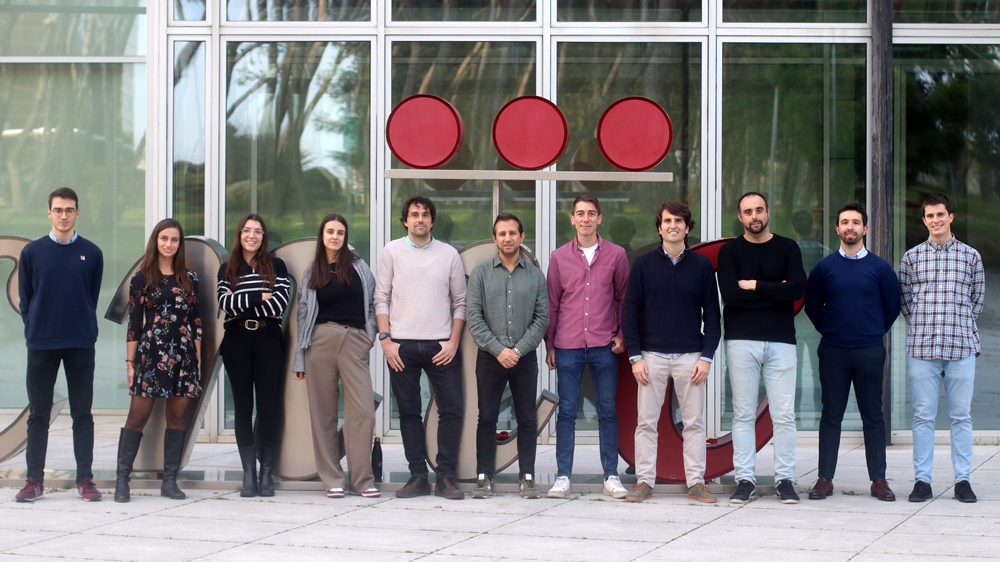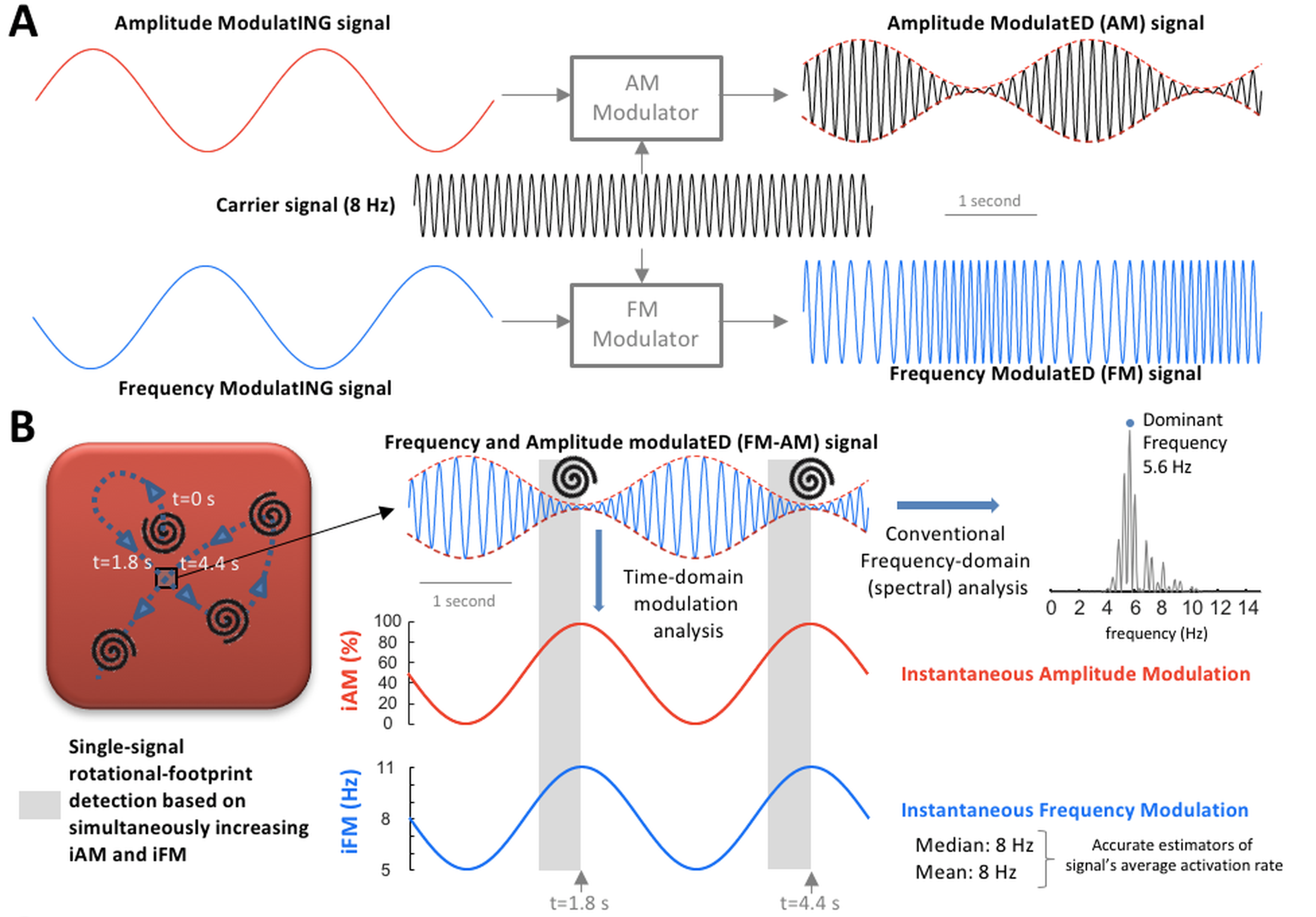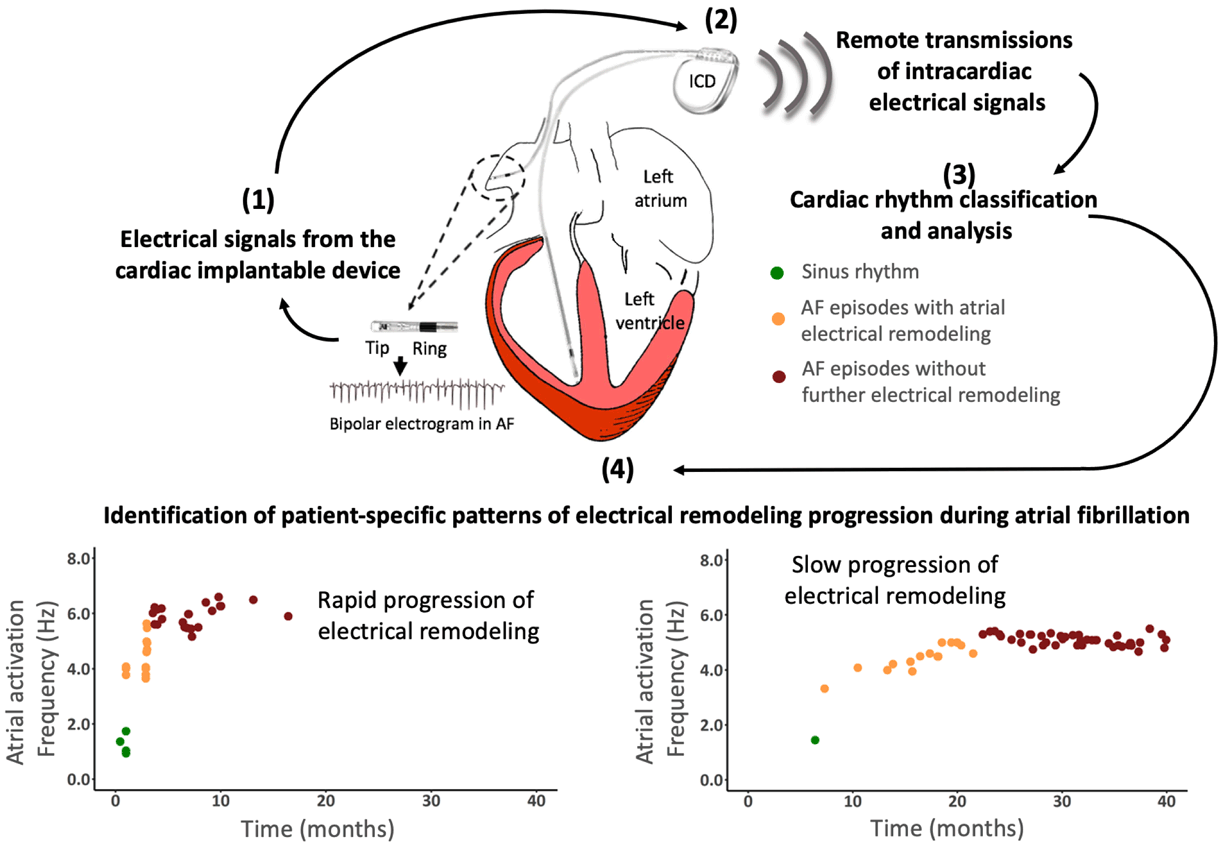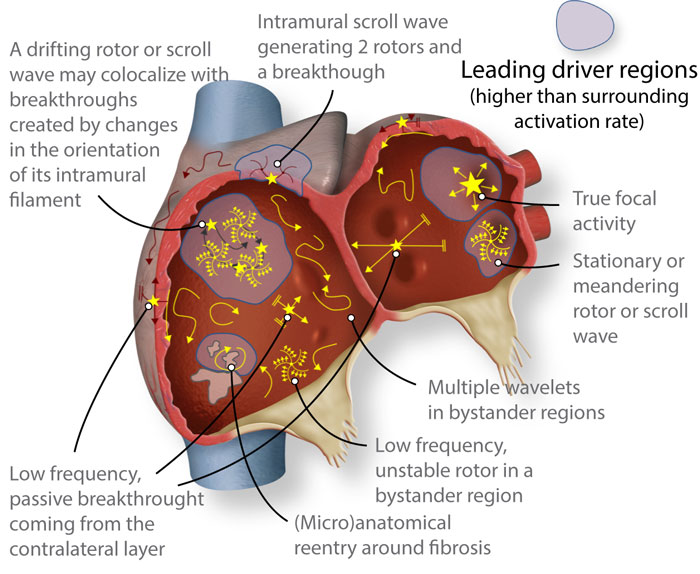Advanced Development in Arrhythmia Mechanisms and Therapy

The Advanced Development in Arrhythmia Mechanisms and Therapy (ADAM-T) laboratory focuses on investigating from a multidisciplinary approach, the mechanisms underlying cardiac arrhythmias that occur in highly prevalent cardiovascular diseases in the general population, as well as in specific subsets at particular risk of sudden cardiac death.
The group of scientists and their collaborators have the primary goal of providing rigorous and detailed understanding of different factors, both at the molecular and cellular level and at the macroscopic and structural level, which are involved in the dynamic behavior of the electrical cardiac activity and may lead to cardiac arrhythmias. Such an endeavor is accomplished by facilitating fluent collaborations between departments, research institutions and universities, and different professional profiles from students to physicians. All together make it possible to establish solid basis for identifying populations at risk of cardiac arrhythmias, as well as for studying and applying new therapies aiming to control and eliminate such a risk. All laboratory members work as a multidisciplinary team to achieve translational impact in all the projects that are currently on going. The laboratory has demonstrated significant contributions in the field of cardiac electrophysiology during the last 10 years. A significant number of publications support the advances in the understanding of complex cardiac arrhythmias, mapping strategies and sudden cardiac death.
Since 2016, the ADAM-T laboratory has been continuously funded by the Instituto de Salud Carlos III (ISCIII) (https://eng.isciii.es/eng.isciii.es/InformacionCiudadanos/DivulgacionCulturaCientifica/DivulgacionISCIII/Paginas/Divulgacion/Que-es-el-ISCIII.html). First, we studied complex wave propagation dynamics during atrial fibrillation in a novel translational pig model of persistent and long-standing persistent atrial fibrillation. The model does not develop heart failure as many commonly reported animal models of atrial fibrillation, which need to be stopped after 1-2 months of follow up because of severe heart failure. This project reported novel and clinically relevant findings on single-signal detection of rotational-footprints and leading-driver regions to identify atrial areas associated with long-term atrial fibrillation maintenance (see Figure 1 below). The results showed that the combination of frequency and amplitude modulations (iFM and iAM, respectively) of electrical or optical signals enabled us to identify specific atrial areas as targets for atrial fibrillation ablation in both the pig model. These results were further validated in a pilot series of patients with symptomatic persistent atrial fibrillation episodes refractory to conventional pulmonary vein isolation. This highly innovative approach has been developed using a fully translational strategy from 2D computational simulations and optical mapping imaging in isolated hearts, to in vivo studies in pigs and further demonstration of its clinical impact in patients with persistent atrial fibrillation. This approach also enables cardiac electrophysiologists to identify patients in whom catheter ablation of limited extension is unlikely to provide any benefit.

Figure 1. A and B: Amplitude modulation (AM) / frequency modulation (FM) concept. A, AM and FM in radio broadcasting. B, Left, during cardiac fibrillation, scroll wave/rotor drifting gives rise to AM and FM. When a drifting scroll wave filament/rotor core approaches the square, the amplitude of the action potential decreases increasing instantaneous AM (iAM; in red). Simultaneously, as the wave-emitting source (scroll wave filament/rotor core) approaches, the perceived instantaneous FM (iFM; in blue) at the spot increases (Doppler Effect). Therefore, simultaneous iAM/iFM increase indicates drifting scroll waves/rotors in the surroundings. Additionally, the areas with the highest average iFM are those potentially driving fibrillation in a hierarchical fashion. Right, average iFM is estimated from its median and mean values (8 Hz both) and with the conventional dominant frequency (DF) spectral approach (5.6 Hz). Interestingly, the time intervals with the highest iFM usually show the lowest amplitudes and vice versa, which conditions the height of their corresponding power spectral peaks and limits the value of DF-based hierarchical approaches. Full paper here.
This novel methodology to efficiently identify and target atrial fibrillation drivers during persistent atrial fibrillation is currently under further clinical validation in the ongoing TAILOR-AF study (NCT05169320) conducted at the Hospital Clínico San Carlos (official partner of the patent PCT/EP2019/077610). The main objective of this study is to identify (using iAM/iFM maps), target and ablate atrial fibrillation leading drivers in patients with symptomatic persistent atrial fibrillation despite ≥2 previous pulmonary vein isolation procedures. The strategy includes a catheter-based mapping and ablation procedure followed by a minimally invasive surgical approach via thoracoscopy, in cases with driver area not suitable for catheter-based ablation. The study also includes the association of underlying blood biomarkers, atrial imaging and surface ECG parameters, with advanced atrial remodelling stages that may require a surgical approach to effectively eliminate leading driver regions. This study is a good example of the strong motivation of the laboratory to achieve clinical impact using translational animal models.
Successful rhythm control in patients with atrial fibrillation is highly dependent on the individual-specific underlying atrial remodelling stage. Such remodelling includes structural, electrical and mechanical changes that make the arrhythmia to persist in the long term. Interestingly, these remodelling changes follow patient-specific patterns that cannot be fully characterize with regular clinical tools. Recently, we have used remote monitoring technology to improve individual-specific characterization of atrial remodelling progression. More specifically, remote transmissions from implantable devices such as pacemakers can be used to monitor cardiac electrical activity during atrial fibrillation episodes. This information can be used to establish both the rate of atrial remodelling progression and the atrial remodelling stage. Results from a multicenter study in collaboration with 51 centers in Spain have shown that cardiac electrical signals from patients fitted with pacemakers or implantable cardioverter–defibrillators can be used to monitor and predict the progression of electrical remodelling progression in a patient-specific manner. Figure 2 (below) shows a schematic view of the methodology and representative results of the study. Full paper here.

Figure 2. Medical application of remote monitoring technology to characterize patient-specific progression of atrial electrical remodelling.
Interestingly, we have documented that our pig model of persistent atrial fibrillation also follows individual-specific patterns which are strikingly similar to the remodelling patterns observed in patients. These results motivated another funded project by the ISCIII, which has been recently completed in june 2024. This multidisciplinary project reported novel mechanistic insights into the electromechanical remodelling process associated with atrial fibrillation progression and further demonstrated its prognostic value in the clinic. In pigs, long-term comprehensive monitoring of AF remodelling demonstrated the presence of atrial electromechanical dissociation in the remodelled atria in vivo. Advanced optical mapping techniques applied to whole heart preparations demonstrated that AF remodelling decreased the frequency threshold to observe dissociation between transmembrane voltage and intracellular free calcium signals. In patients, non-invasive assessment of the atrial electromechanical relationship demonstrated that atrial electromechanical dissociation is an early prognostic indicator for acute and long-term rhythm control. Full paper here.
Cardiac fibrillation, and more specifically, atrial fibrillation is a complex arrhythmia that requires software and imaging tools to understand the dynamics and wave-propagation patterns that can be targeted to terminate the arrhythmia. A simplified schema of the complexity of atrial fibrillation dynamics is shown in Figure 3 (below). More information can be found in Jorge G. Quintanilla et al. Cardiovasc. Res. 2021;117:1662-1681.

Figure 3. Schematic of structurally and electrically remodeled atria, where several reported patterns might coexist. However, atrial fibrillation may still be driven in a hierarchical fashion by specific regions with higher than surrounding activation rate (leading drivers). Such regions would host reentrant drivers in many cases, albeit not all reentrant activity would act as a driver, since rotors are commonly found in passive bystander regions.
The highly translational value of the pig model, and current gaps in knowledge to characterize atrial remodelling progression and atrial myopathy using novel biomarkers, led to additional funding from the European Commission, under the H2020 program and the Machine Learning Artificial Intelligence Early Detection Stroke Atrial Fibrillation (MAESTRIA) consortium. The MAESTRIA project team focuses on developing novel approaches for timely detection of atrial myopathy to improve care management and identifying novel therapeutic targets for personalized medicine of atrial fibrillation and stroke. More recently, the Ministerio de Ciencia e Innovación have also funded a collaborative project aiming to integrate genetic and patient-specific parameters to predict atrial fibrillation progression and the therapeutic response in a patient-specific manner.
Overall, atrial fibrillation is a long-term line of research in the lab since 2014. The laboratory will continue to take advantage of a translational pig model of long-lasting persistent atrial fibrillation closely resembling atrial fibrillation pathophysiology in the clinic. We will work on the general hypothesis that atrial fibrillation is a deterministic process that is sustained by atrial regions with specific electrophysiological and structural properties. We will also work in novel areas to understand atrial fibrillation pathophysiology, which may have clinical implications for rhythm control. More specifically, in the near future we will study the role of the innate immunity in atrial fibrillation maintenance. Two new international projects will also support new studies on antiarrhythmic drug strategies during the next 5 years.
Unlike unipolar or bipolar electrical recordings, optical mapping recordings provide action potential data, which potentially should improve the accuracy of the above-mentioned methodology to identify specific atrial regions associated with long-term atrial fibrillation maintenance. In fact, at the experimental level optical mapping approaches are the most widely-used tools for studying fibrillation and drug-action at high spatiotemporal resolution in isolated-heart preparations. Such ex vivo preparations permit the use of interventions (e.g., the use of motion uncouplers) that greatly improve fluorescence signal acquisition but are not viable in vivo. New methods for in vivo studies have the potential to generate a tremendous impact in the understanding of complex cardiac arrhythmia in the clinic. We recently developed an experimental method that utilizes near-infrared voltage-sensitive dyes (di-4-ANBDQBS / di-4-ANEQ(F)PTEA) optimized for imaging blood-perfused tissue. A representative movie with dye injection and loading via percutaneous catheterization of the left descending coronary artery in vivo is shown below.

The excitation-ratiometric properties of di-4-ANBDQBS and di-4-ANEQ(F)PTEA ex vivo demonstrated that ratiometry permits the recording of action potentials with minimal motion artifacts in the contracting heart. In vivo application of excitation-ratiometric properties and high-performance optical technology in the translational pig model enabled high-resolution imaging of action potentials and wave propagation dynamics during both ventricular fibrillation (motion minimal) and electrical pacing (motion substantial). Extensive toxicity studies showed that coronary dye injection did not generate systemic nor cardiac damage, although di-4-ANBDQBS injection induced transient hypotension, which was not observed with di-4-ANEQ(F)PTEA. Full paper here. The data show the potential of achieving cardiac optical mapping in clinical cardiac electrophysiology. We are currently developing this technology to achieve in vivo optical mapping from the endocardial surface of cardiac chambers using minimally invasive catheter technology. The latter will represent a significant breakthrough in the field of cardiac electrophysiology, since optical action potentials provide the highest standards of tissue and cellular electrophysiology, potentially moving the field to a new era of high-performance mapping in the clinic.
Animal models and research areas are complemented with research activities in the clinic. The laboratory is also carrying out other two clinical trials related to atrial fibrillation (https://clinicaltrials.gov/ct2/show/NCT03005366?term=Filgueiras-Rama&rank=2) and ventricular fibrillation (https://clinicaltrials.gov/ct2/show/NCT03248557?term=Filgueiras-Rama&rank=1). The laboratory also works on big data analysis from a multicentre registry of cardiac implantable devices to identify electrical parameters associated with ventricular arrhythmic events in patients with implantable cardioverter defibrillator. This project has been approved by the UMBRELLA scientific committee, which represents a multicentre Spanish observational registry (https://clinicaltrials.gov/ct2/show/NCT01561144?term=UMBRELLA&rank=3), ensuring the legal, normative, and scientific data exploitation. Moreover, these data are complemented with a multicentre study involving 8 participant centres in Spain to further demonstrate and validate the predictive models developed with the signals obtained within the UMBRELLA registry.






